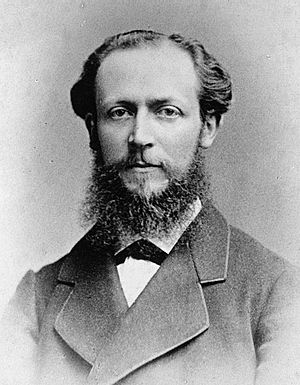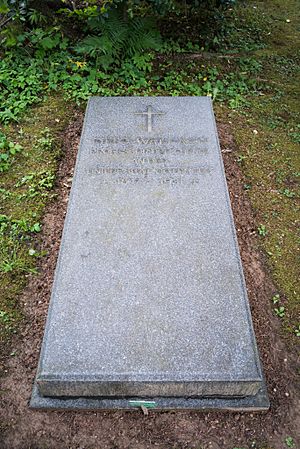Otto Wallach facts for kids
Quick facts for kids
Otto Wallach
|
|
|---|---|

Wallach c. 1873
|
|
| Born | 27 March 1847 |
| Died | 26 February 1931 (aged 83) |
| Nationality | Prussia / German Empire |
| Alma mater | University of Göttingen |
| Known for | Isoprene rule |
| Awards | Nobel Prize for Chemistry (1910) Davy Medal (1912) |
| Scientific career | |
| Fields | Organic chemistry |
| Institutions | University of Göttingen, University of Bonn |
| Doctoral advisor | Hans Hübner |
| Doctoral students | Walter Haworth, Adolf Sieverts |
Otto Wallach (born March 27, 1847 – died February 26, 1931) was an important German chemist. He won the Nobel Prize in Chemistry in 1910 for his amazing work on a group of chemicals called alicyclic compounds. These compounds are found in many natural things, like essential oils.
Contents
Biography and Early Life
Otto Wallach was born in Königsberg, which was part of Prussia at the time. His father, Gerhard Wallach, was a civil servant. His mother was Otillie Thoma. Otto's family moved several times, first to Stettin and then to Potsdam.
In Potsdam, Otto went to a special school called a Gymnasium. Here, he developed a love for literature and art history, which he enjoyed his whole life. He also started doing his own chemistry experiments at home.
Education and Career
In 1867, Otto Wallach began studying chemistry at the University of Göttingen. A famous chemist named Friedrich Wöhler was in charge of organic chemistry there. After spending a semester at the University of Berlin, Wallach earned his doctoral degree from the University of Göttingen in 1869.
He then became a professor at the University of Bonn, where he worked from 1870 to 1889. Later, he moved back to the University of Göttingen and taught there from 1889 until 1915. Two of his students who went on to become important chemists were Adolf Sieverts and Walter Haworth.
Otto Wallach passed away in Göttingen on February 26, 1931. In 1912, he was given the Davy Medal, another important award for his scientific contributions.
Discoveries and Major Works
While working with Friedrich Kekulé in Bonn, Otto Wallach began to study chemicals called terpenes. These terpenes are found in essential oils, which give plants their smells and flavors. Before Wallach's work, it was hard to study terpenes because they were often liquids and their structures were not well understood.
Wallach found ways to turn these liquid terpenes into solid, crystalline forms. This made them much easier to study. He also discovered how some terpenes could change their structure through something called a rearrangement reaction. By understanding these changes, he could figure out the structure of new terpenes by seeing how they rearranged into known ones. His methods opened up a whole new way to study terpenes.
Otto Wallach was also responsible for giving the names to terpene and pinene. Pinene is a terpene found in pine trees. He wrote an important book about the chemistry of terpenes called "Terpene und Campher" (Terpenes and Camphor) in 1909.
He is also known for several important chemical reactions and rules, including:
- Wallach's rule
- Wallach degradation
- The Leuckart-Wallach reaction (which he developed with Rudolf Leuckart)
- The Wallach rearrangement
Images for kids
See also
 In Spanish: Otto Wallach para niños
In Spanish: Otto Wallach para niños



